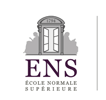Abstract
This article analyzes the reception of Modern European Art in Calcutta in the early decades of the twentieth century. In the initial years, the knowledge of the European avant-gardes was limited. It then got rejected as a legitimate source of influence by the Bengal School ideologues close to the nationalist movement. In the early 1930s, the painter Jamini Roy paved the way for a new aesthetics which rejected the Bengal School ideological project and turned to folk arts as models. The style he pioneered naturally appealed to the global modern sensibility. The 1940s are marked by a phase of enthusiasm for European avant-gardes and the departure of many Indian artists to Paris.
Recommended Citation
Trouilloud, Julia Madeleine. "The Reception of Modern European Art in Calcutta: a Complex Negotiation (1910s-1940s)." Artl@s Bulletin 6, no. 2 (2017): Article 7.
Included in
Modern Art and Architecture Commons, Other History of Art, Architecture, and Archaeology Commons






